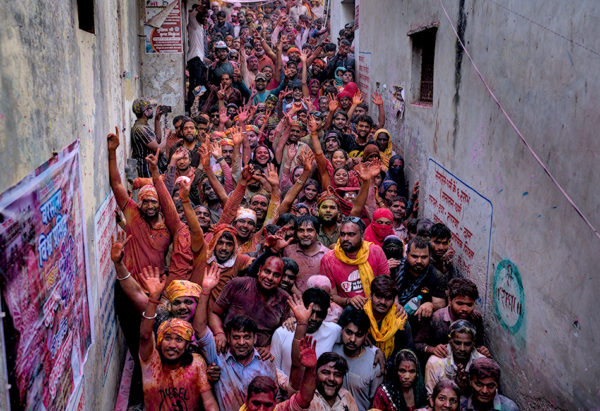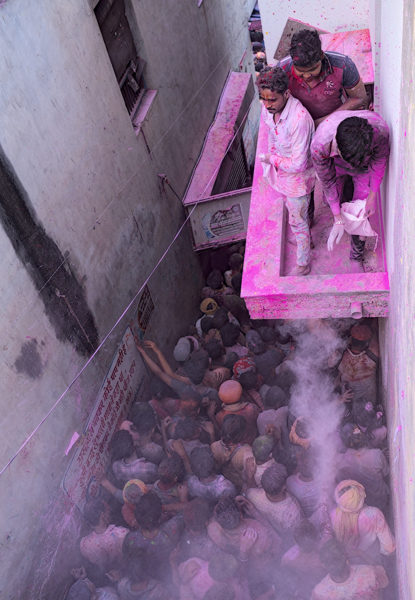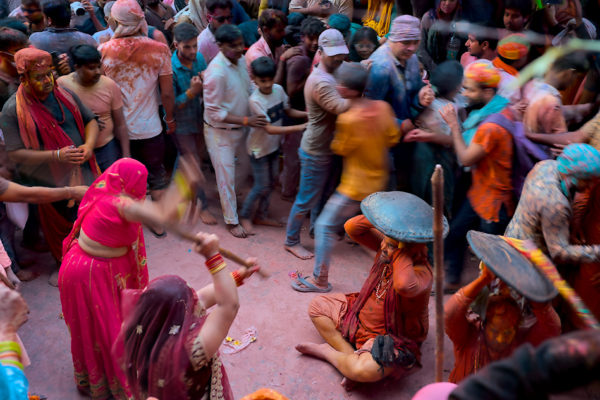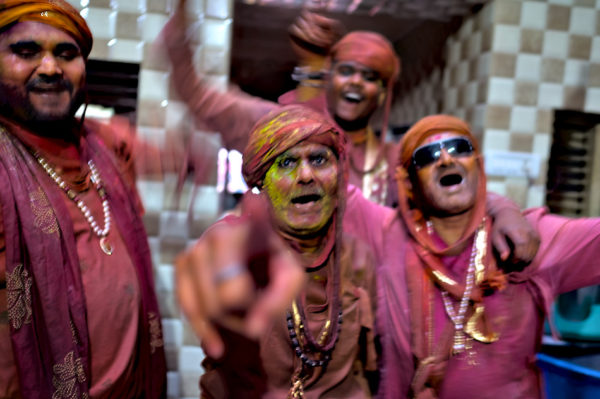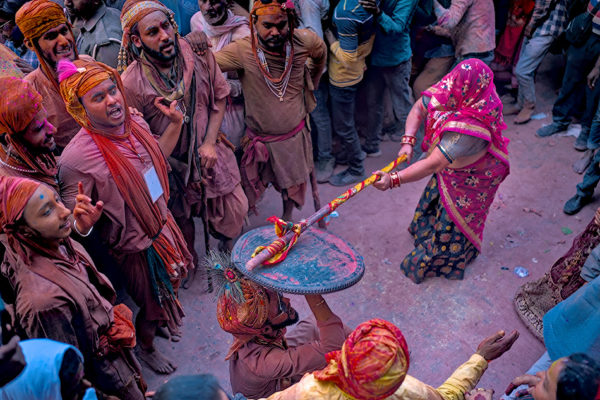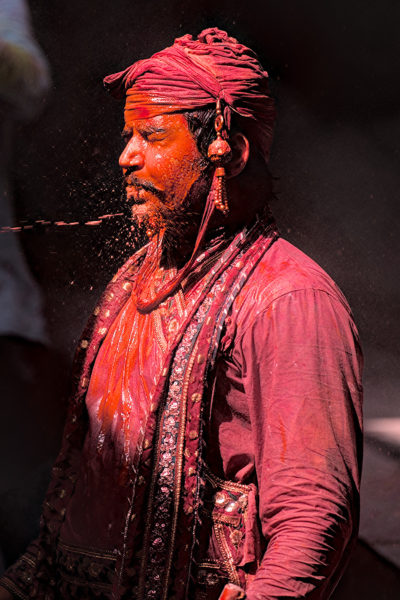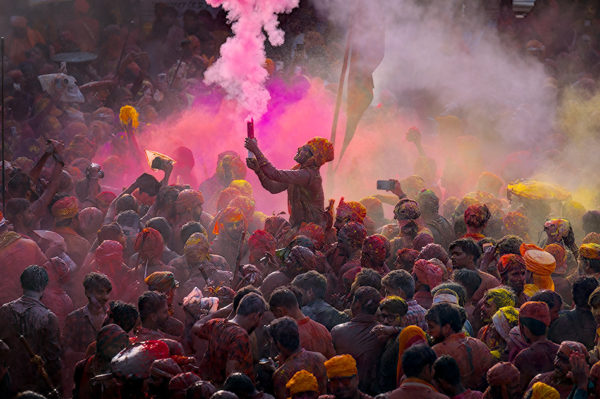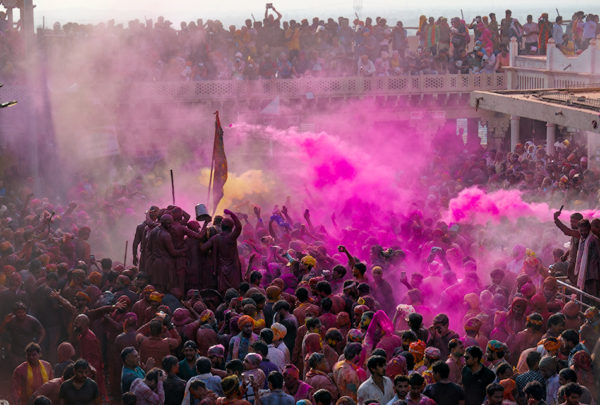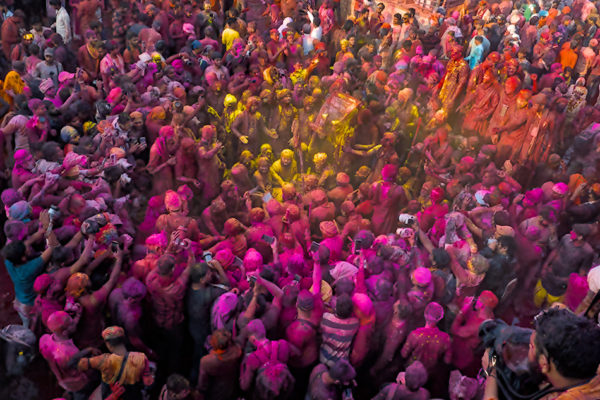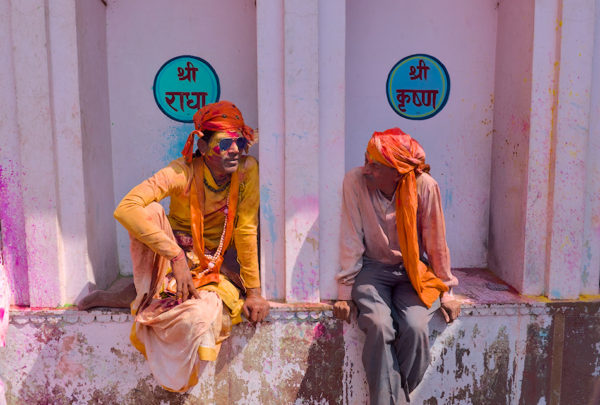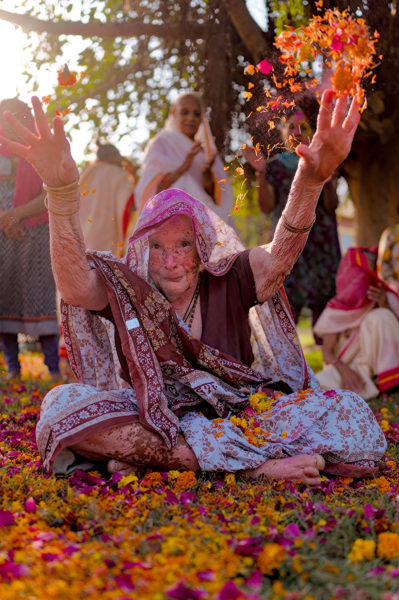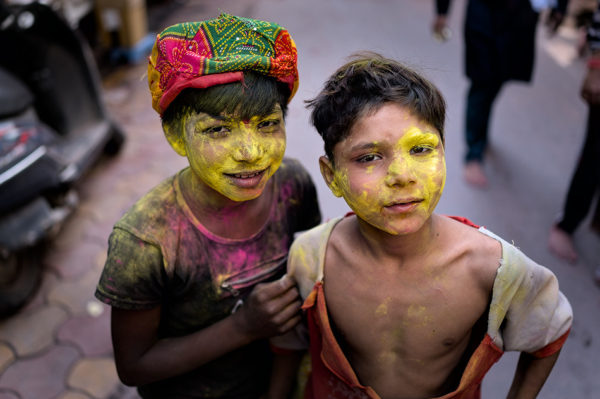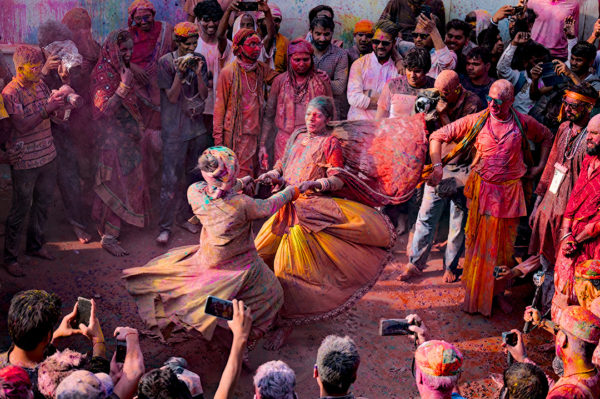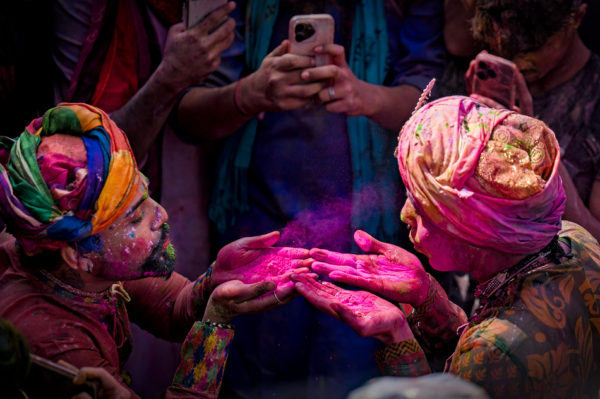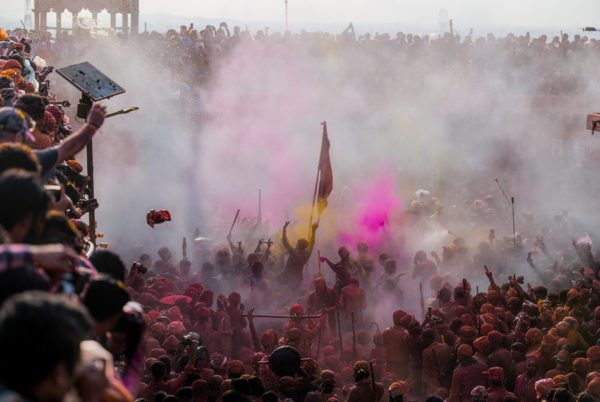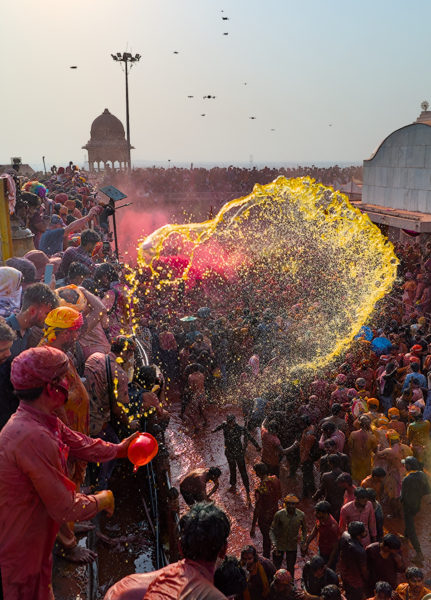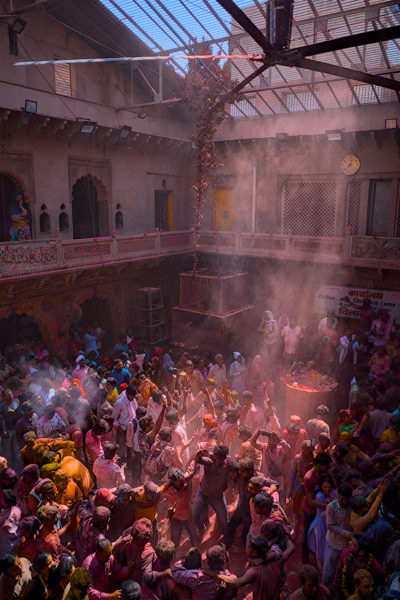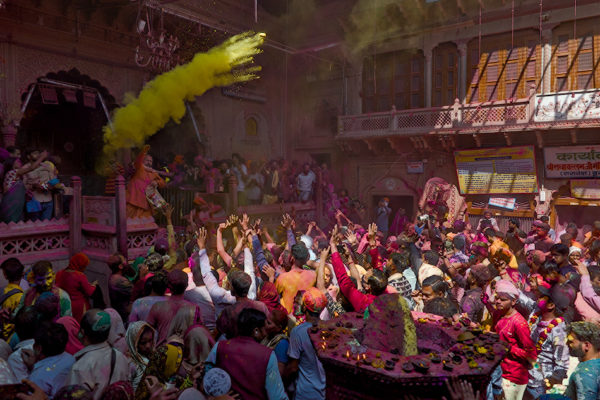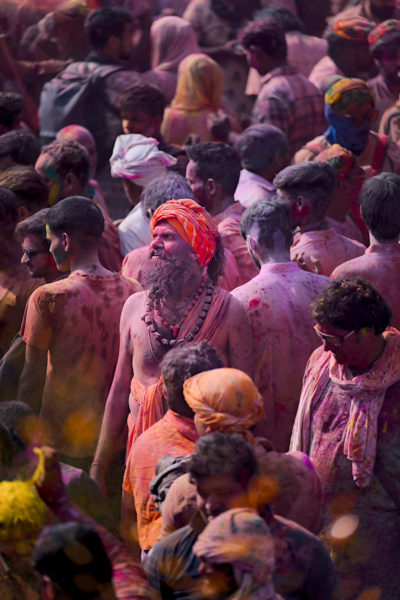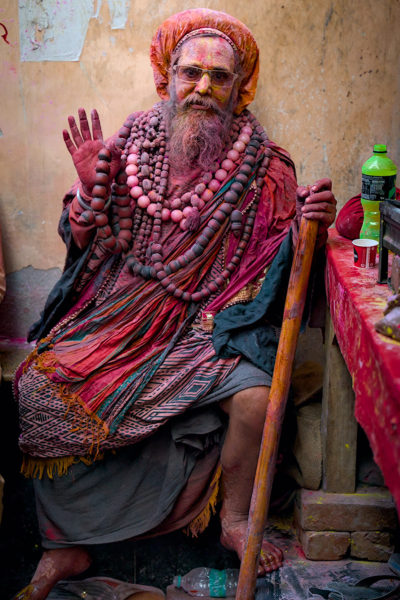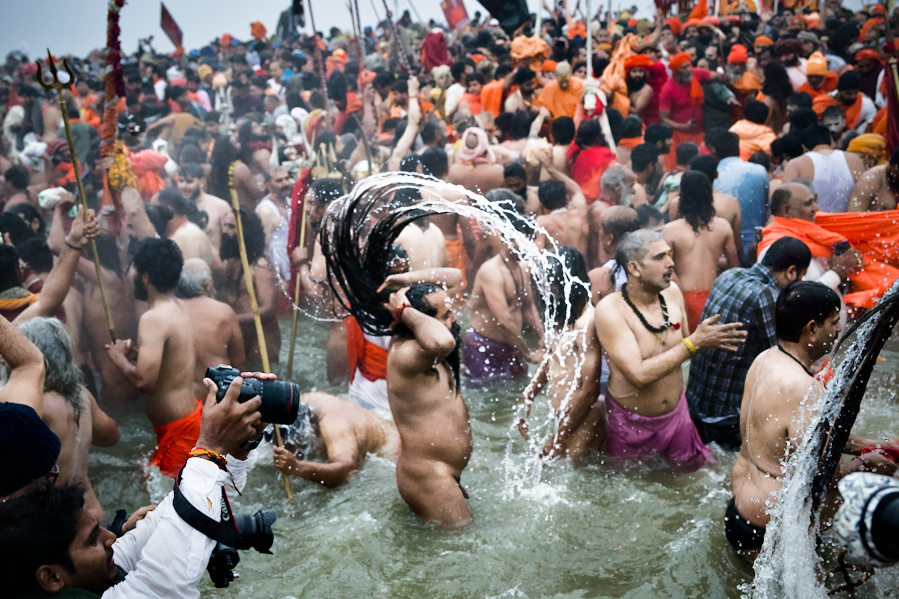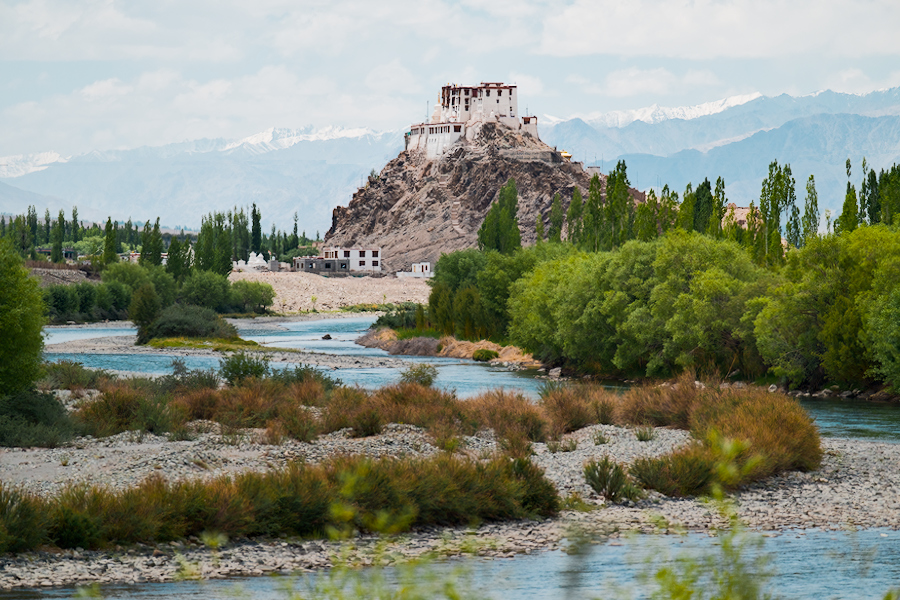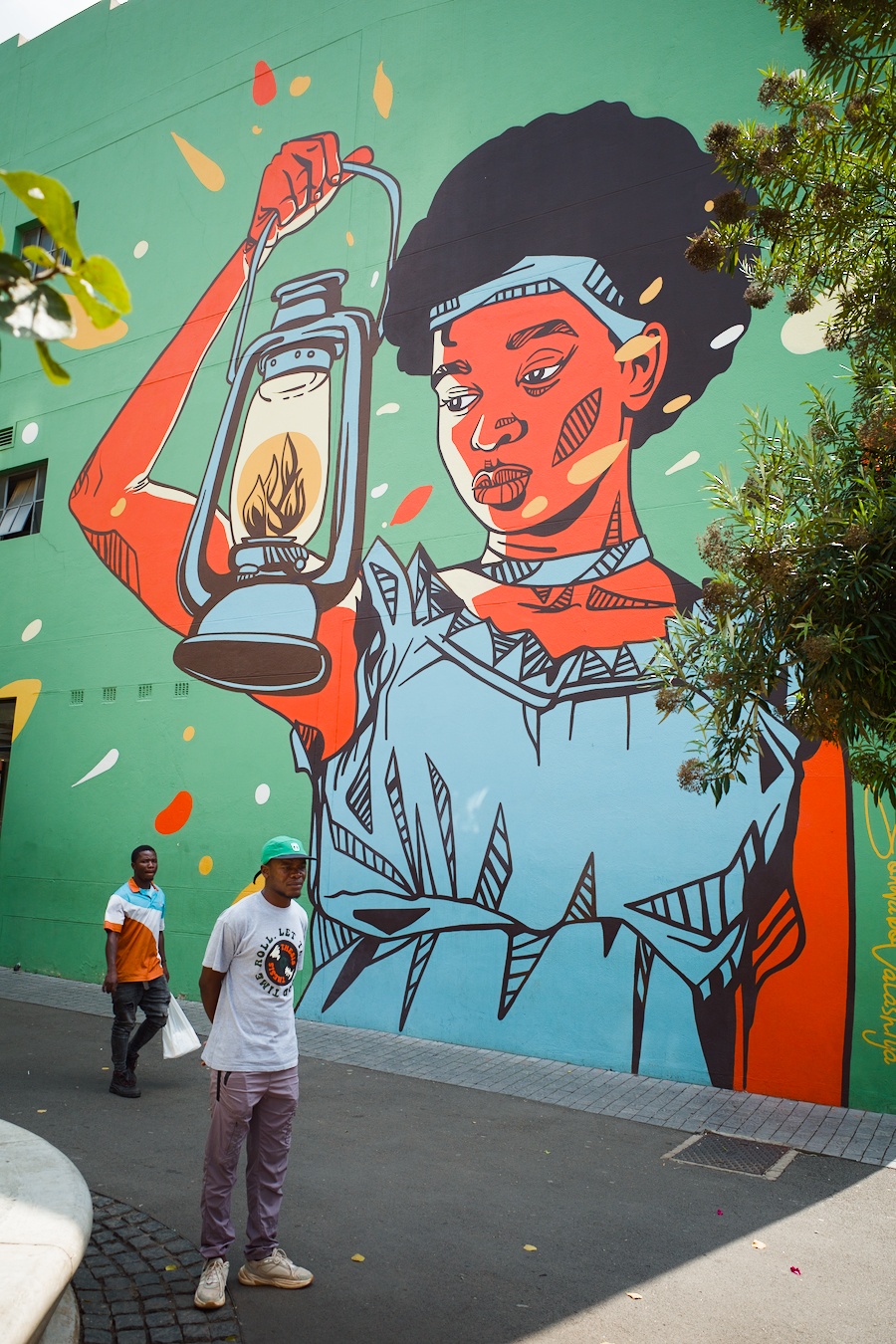Braj ki Holi – a celebration, and an adventure
The crowd pulses between a stampede and a celebration. One moment it feels like the end, and the next moment you in in a celebration and flow of humanity. As the waves of crowd squeeze past the narrow lanes, the road is left littered with the broken chappals, shoes and sandals.
The shopkeepers along the narrow lanes will give you refuge only if you order their aloo-tikki chat, which is a small price to pay to save yourself.
Gulal is pouring down from all directions. You try not to think of all the chemicals that are entering you in every imaginable possible way – through your eyes, ears, skin, nose, mouth. You merely hope that they are not too toxic,.. and most probably they are..
It is an adrenaline fuelled festival. Women are lacking in numbers, and the male energies dominate, which make the festival a lot physical and excessive. There is no moment of celebrating pausing, of ease, or of enjoying it. The act of throwing color itself becomes the thing.
It’s remarkable that ‘Lathmaar Holi’ is even possible in this conservative society. The men come to the village of Barsana from Nandgaon, and say things to rile up the women up – the double meaning songs, and the obscene gestures. The women find their strength in the repulsion, and hit the men with lathis with all the force they can muster, and with no guilt.
This event feels out-of-place in todays politically correct world. it is a bit of a ritual, some play acting, some socialising, and no-one means harm. The only thing hurt are our delicate urban sensibilities.
These men are from the village of Nandgaon, and have come to Barsana to play the Lathmaar holi – basically get beaten up by the women . They are all high on the celebrations, (and maybe other things too), prepared to survive the beating. These people are linked to each other across generations through marriages. These are simple village folks, and their lives are held together by these web of relationships, and their devotion to Krishna and Radha.
Legend has it, that on a suggestion by his mother Yashoda, Krishna went to Barsana to put colour on Radha since he was feeling inadequate for being so dark compared to her. In return for his efforts, he was beaten back by Radha and the Gopis. This is the origin story of Lathmaar Holi, the playful face-off between women of Barsana (where Radha was from) and men of Nandgaon (where Krishna lived).
They keep their faith alive by Imitating the Gods. The subtext of everything here is that all actions are dedicated to Him, and are an expression of love for Him..
The men dress in elaborate traditional clothes, which will not survive the day. Many international Tourists come covered in PPE suites to escape the water and colors. They look like distressed voyeurs, who miss the spirit of the festival.
The walls we build around us, the way we isolate ourselves from other people, all come crashing down in these crowds. Everyone looks the same with all the colors and water, and you are pulled into the conversations and playfulness with strangers.The only way to celebrate it, is to accept everything and everyone.
It has the feel of a battle scene, and even has a strain of confrontation. The people from two villages are in a playful face-off with each other. This is the day when the men of Barsana pay a visit back to men of Nandgaon, a day after the Lathmar holi in Barsana.
An occasional skirmish breaks out, but people intervene quickly to dissipate it and diffuse the situation.
The temple premises, which are usually calm, transform into a riot of colors and loud singing and partying. It becomes a melting pot of cultures – these are villagers mingling with the urban travelers and global tourists. The cultures mix awkwardly, as the sensibilities dont mingle well. No one misbehaves directly. There are almost no women, and a few unfortunate ones who do come here get targeted with all the colors and water.
The men visiting from Barsana sit in front of the locals from Nandgaon, the setting called the Samaaj. There are ritual singling, story telling, remembering the times 5000 years ago when Krishna lived here. There is no way to access this core of the celebration, which is the highpoint of the ritual.
All the walls carry the reminder of the Gods, who lived in the village, and played Holi with them. Even the social greetings are their names, a way of remembering them constantly. A Loud Radhe-Radhe could be someone calling for your attention, or just warning you that their cycle has no breaks.
The widows, who have retired from the world in this old-age ashram, have a tradition of playing the flower-Holi. The super-active coordinator pulls the old women out of their shyness to play with everyone. Once they find the child inside them, there is no stopping any of them. They will chase anyone they see without colors to cover them with gulal, flowers, and blessings. It is an exciting break in the routine of the ashram life.
For the whole week, the social norms are bent. People walk around with colors on their face and clothes, and a smile. There is an acceptance and a shared celebration.
This is the day when the transgender and queers come our openly, to express themselves through their dresses, celebrations and dance. They are respectfully allowed their space. The big burly macho men turn to jelly when faced with them, and their bhaav (Mood) of Gopi to play holi with them.
Some of the devotees pray to be born as a girl in the next birth, so that they can deepen their love for Krishna, the way Gopis felt it.
The men at Nandgaon wait with drums full of water, coloured with flowers and colour dyes, to welcome the men from Barsana. Photographers wait too, perched on the precarious edge of the old roof tying to get the best vantage point overlooking the temple courtyard. The sky is dotted by the drones waiting to capture the event – an intimate local festival has become a globally broadcasted event.
As the men of barsana walk in, pandemonium breaks. There is a deluge of water and colors thrown at them from the roof-top. The villagers see all of the tourists as irritants who come in the way of their water dunking. The villagers dont shy away from throwing water at the photographers and their equipment if they dont comply with their ‘requests’.
In most other temples, the mood is less aggressive and more joyful than in Nandgaon. The music and the chants are everywhere, and the crowds are all in a dancing frenzy. The joy embraces everyone and feels like grace flowing in from the heavens.
The temple priest needs to have a strong arm, to lob that fistful of colour over the crowd. Each throw of Gulal is cheered on loudly. There is a connection with everyone, and even strangers feel like family. It is raining colors, grace, and celebrations.

